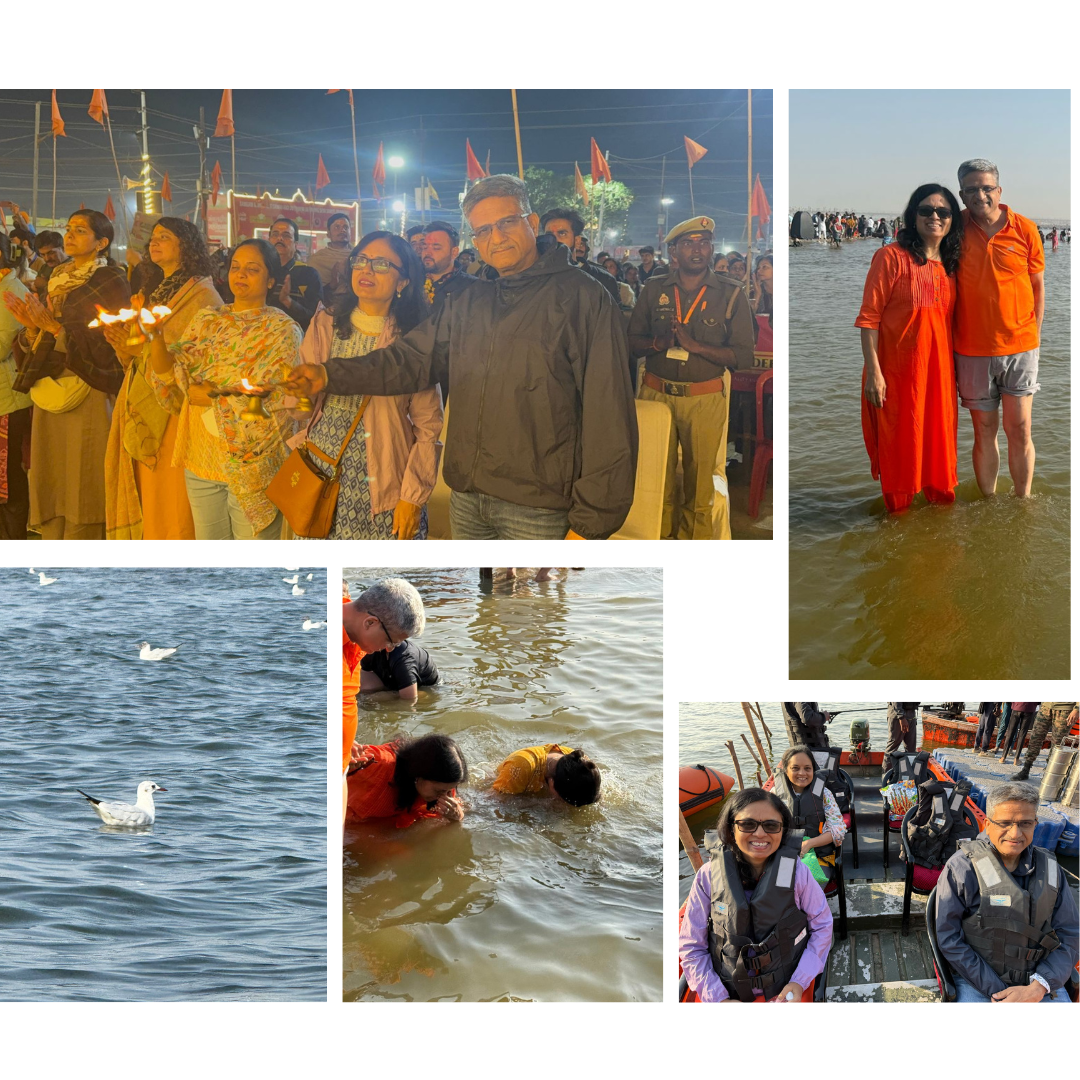
When the Kumbh Mela was announced a few months ago, set to take place in Prayagraj from January 13 to February 26, I felt a strong desire to take a dip in Sangam which is a confluence of 3 rivers Ganga, Yamuna and Saraswati. At first, I knew little about the significance of the Kumbh Mela, but my curiosity grew, prompting me to learn more about its importance.
Though there were concerns, such as long traffic jams and the overwhelming crowds, I decided to take a leap of faith and attend the Mahakumbh Mela. After all, people from around the world were coming to this sacred event, so why shouldn’t I join? Ultimately, I believed that if it was meant to happen, it would—if the Gods were willing. With this mindset, I committed to going, and I’m glad I did!
I would like to commend the Uttar Pradesh government for organizing such an impressive event. From the moment I arrived at Prayagraj’s airport, I was greeted by beautifully lit streets, statues in roundabouts, and a fairly well-managed traffic—especially considering that over 50 crore people have already visited the Kumbh Mela in 2025.
On February 14, my sister Swati, my husband Rajiv, and I set out to take a dip at the Sangam. As I stood on the riverbank, I felt an overwhelming sense of spirituality and divinity. Our day began at sunrise, and we chanted the Gayatri mantra:
ॐ भूर्भुवः स्वः
तत्सवितुर्वरेण्यं
भर्गो देवस्य धीमहि
धियो यो नः प्रचोदयात् ॥
Om Bhuur-Bhuvah Svah
Tat-Savitur-Varennyam
Bhargo Devasya Dhiimahi
Dhiyo Yo Nah Pracodayaat ||
This mantra helped awaken our spirituality, and then came the holy dip. Though the water was cold, it was an incredibly comforting and divine experience—truly something to experience once in a lifetime.
Witnessing the Triveni Arti in the evening at sunset was another amazing experience! And as I walked through Prayagraj (formerly Allahabad), I realized just how unique the city is! Allahabad University was the first of four universities in India, and the Allahabad High Court was one of the first high courts in the country. The city was also a political hub and the birthplace of Nehru Ji. Many great political figures, such as Pandit Madan Mohan Malviya, Sarojini Naidu, and Indira Gandhi, hailed from here. It’s also a literary center, home to poets like Harivanshrai Bachchan, Mahadevi Verma and Firaq Gorakhpuri. While strolling through the streets of Allahabad, I couldn’t help but think of Amitabh Bachchan Ji, who is Prof. Emeritus at Symbiosis. I messaged him, saying, “I’m in your city… imagine how you must have walked these streets every day.” He replied, “Oh how wonderful… We used to walk every day to Sangam, bathe, cross the bandh, and enjoy the most delicious jalebi and milk.”
As I left Prayagraj, I reflected on our Indian culture, heritage, and mythology, and wondered how much the younger generation knows about it. Even my generation, especially those of us educated in convent schools, often feel disconnected from our own mythology and heritage. It’s our responsibility as educators to instill knowledge, respect, and appreciation for our traditions in the younger generation. By combining this cultural wisdom with modern technological knowledge, we can empower them to face the world with strong values, creating leaders rather than mere employees.
Our deep-rooted heritage will play a key role in nation-building, and India’s rich culture can propel it to become Vishwaguru—a country strong in both its culture and capabilities, ready to lead the world.